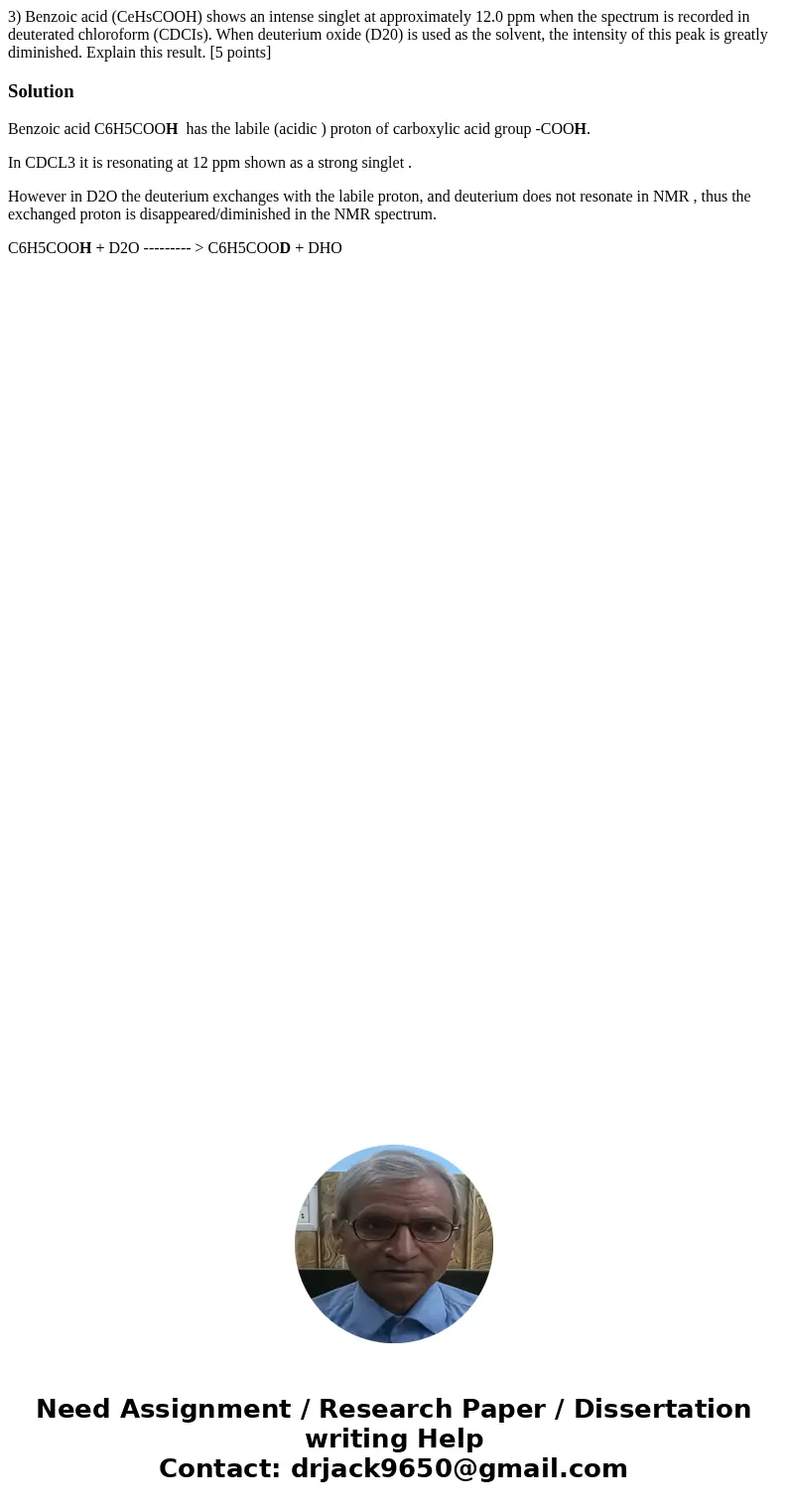3 Benzoic acid CeHsCOOH shows an intense singlet at approxim
3) Benzoic acid (CeHsCOOH) shows an intense singlet at approximately 12.0 ppm when the spectrum is recorded in deuterated chloroform (CDCIs). When deuterium oxide (D20) is used as the solvent, the intensity of this peak is greatly diminished. Explain this result. [5 points] 
Solution
Benzoic acid C6H5COOH has the labile (acidic ) proton of carboxylic acid group -COOH.
In CDCL3 it is resonating at 12 ppm shown as a strong singlet .
However in D2O the deuterium exchanges with the labile proton, and deuterium does not resonate in NMR , thus the exchanged proton is disappeared/diminished in the NMR spectrum.
C6H5COOH + D2O --------- > C6H5COOD + DHO

 Homework Sourse
Homework Sourse